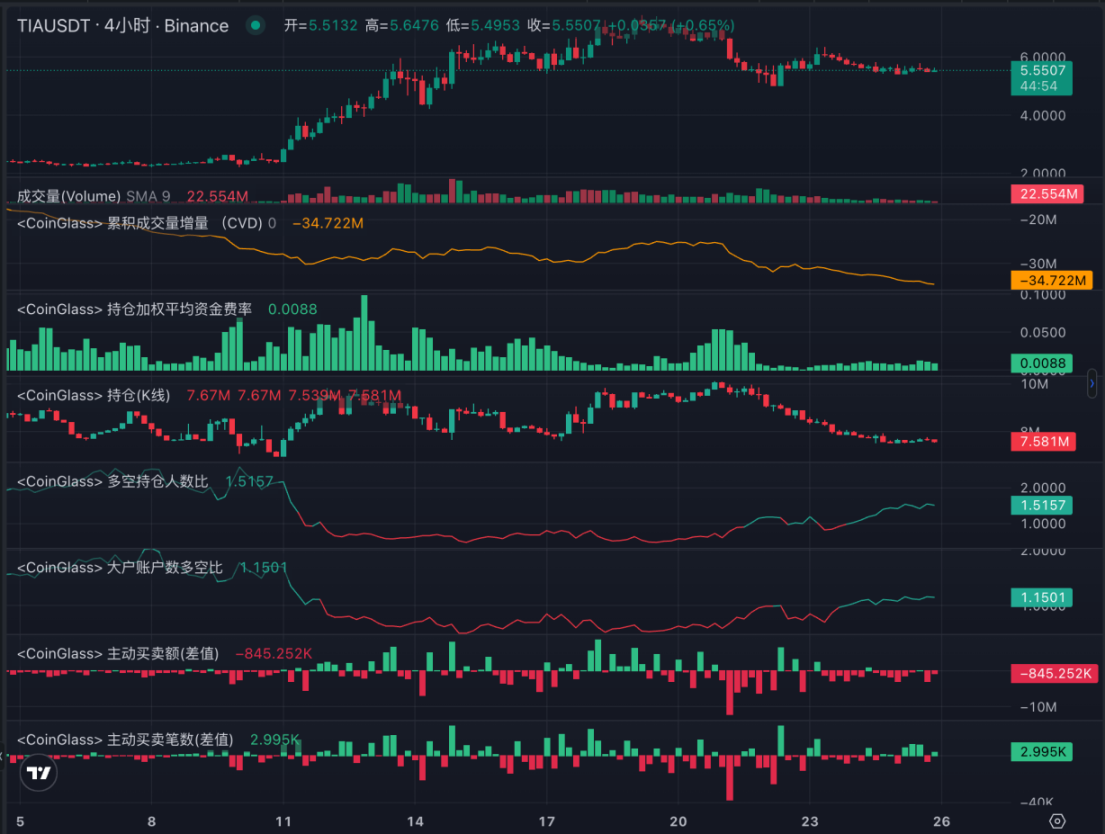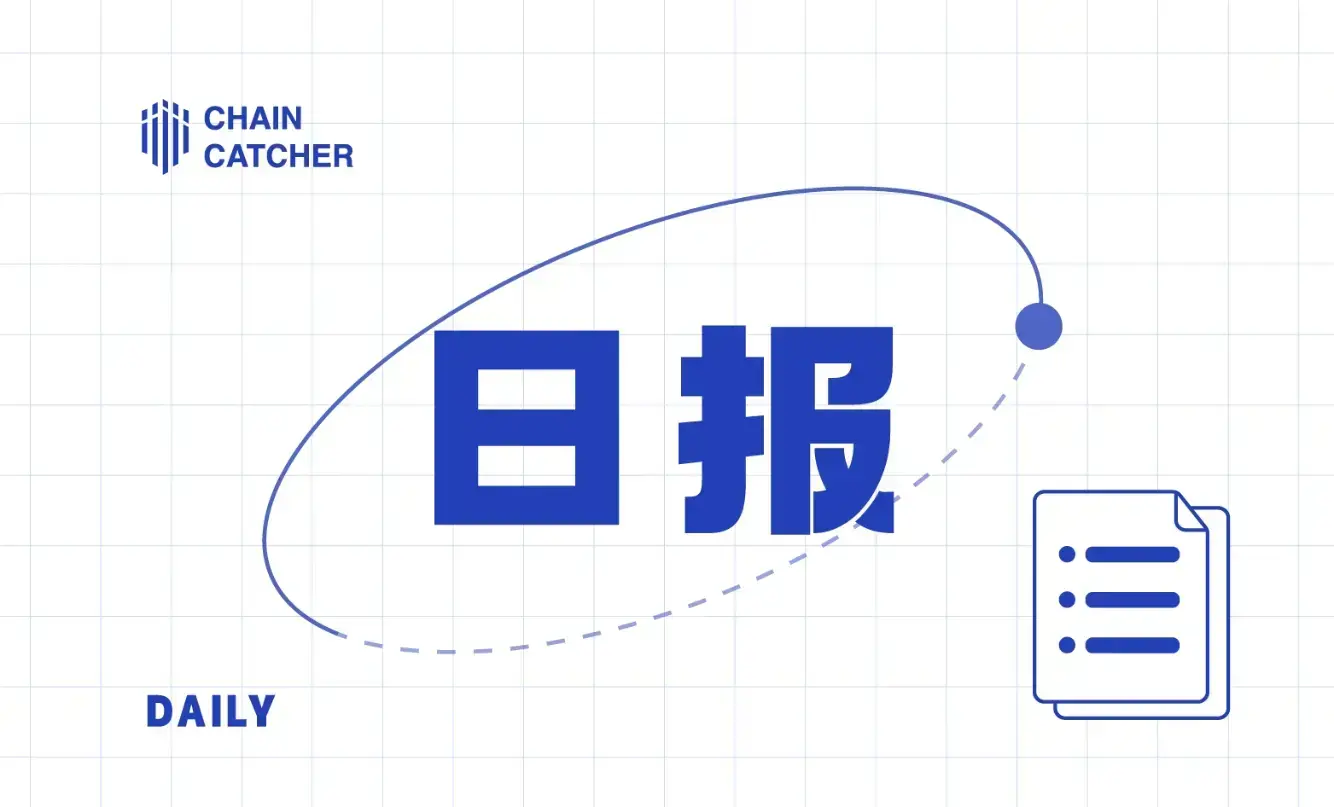LD Capital: A Brief Analysis of the Modular Blockchain Celestia
Written by: Lisa, LD Capital
1. Project Overview
Celestia is a modular blockchain project focused on data availability. Unlike monolithic blockchains that independently handle execution, settlement, consensus, and data availability, modular blockchains decouple these functions across multiple specialized layers. This modular stack, akin to a Lego structure, provides better flexibility and scalability for each module. The foundational layer of Celestia consists of consensus and data availability, referred to by the project team as the DA layer.
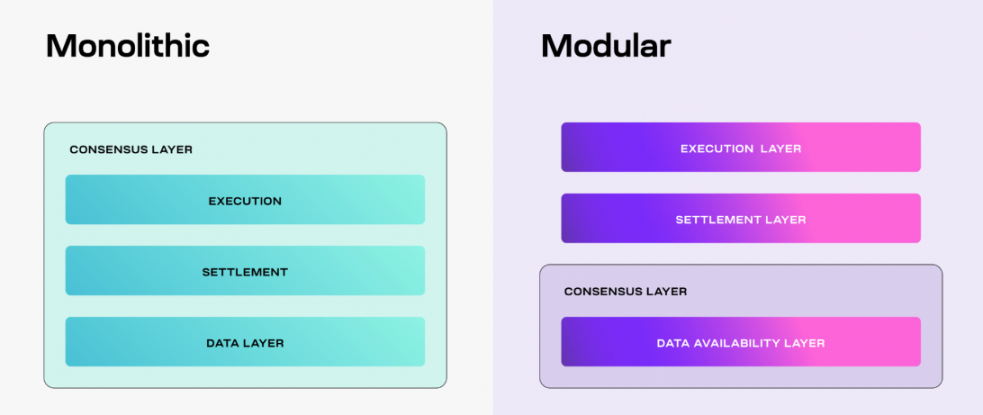
Celestia is a POS blockchain based on CometBFT and Cosmos SDK, with two key functions in its DA layer: data availability sampling (DAS) and namespaced Merkle trees (NMT).
DAS allows light nodes to verify data availability without downloading the entire block. Light nodes cannot verify data availability as they only download block headers; thus, Celestia employs a two-dimensional Reed-Solomon encoding scheme to re-encode block data for light node DAS. The working principle of data availability sampling (DAS) involves light nodes performing multiple rounds of random sampling on small portions of block data. As light nodes complete more rounds of block data sampling, their confidence in data availability increases. Once a light node successfully reaches a predetermined confidence level (e.g., 99%), the data is considered available.
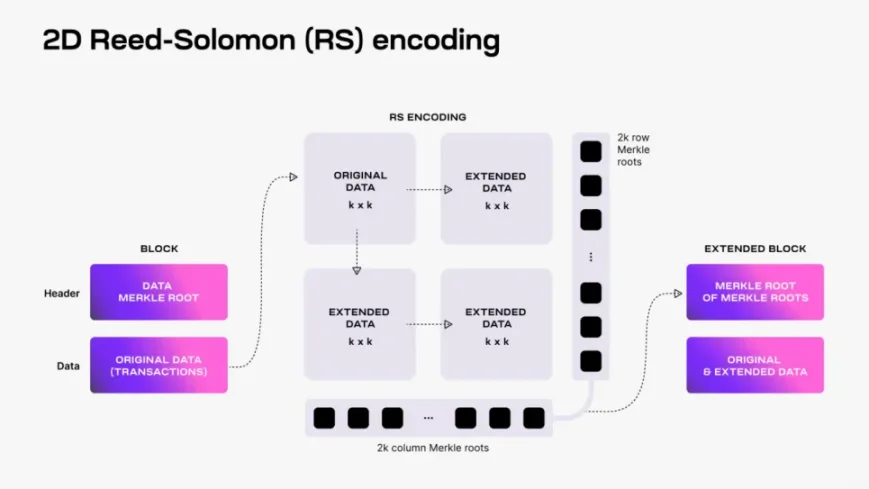
NMT enables the execution and settlement layers on Celestia to download only the transactions relevant to them. Celestia divides the data within blocks into multiple namespaces, each corresponding to applications like rollups built on Celestia. Each application only needs to download data pertinent to itself, thereby enhancing network efficiency.
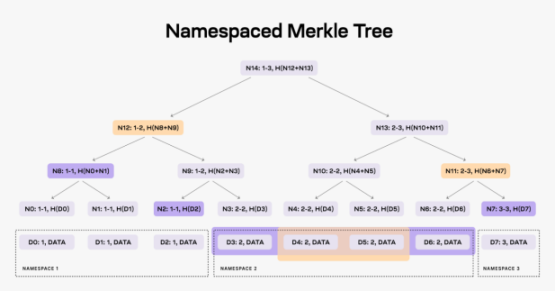
2. Financing Information
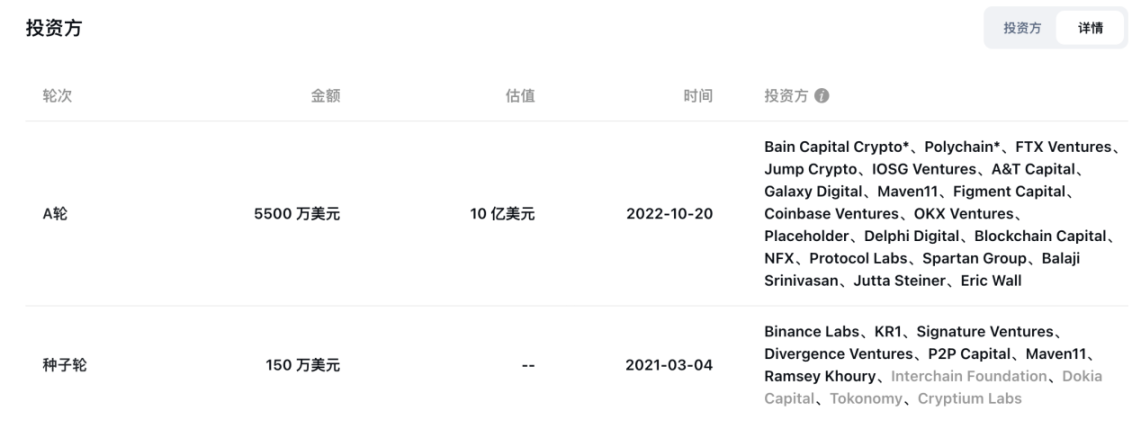
3. Economic Model
TIA is the native token of Celestia, with a total issuance of 1 billion tokens. The inflation rate for the first year is 8%, decreasing by 10% each subsequent year until the annual inflation rate drops to 1.5%.
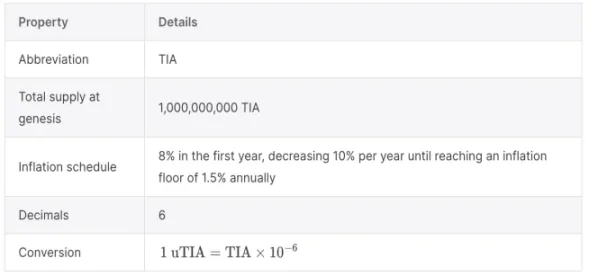
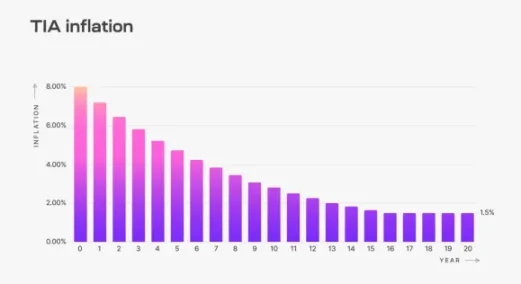
(1) Use Cases
- Rollup developers need to pay fees for Celestia DA in TIA;
- Similar to Ethereum, rollups built on Celestia will use TIA as gas fees;
- Staking;
- Governance.
(2) Allocation and Unlocking Situation
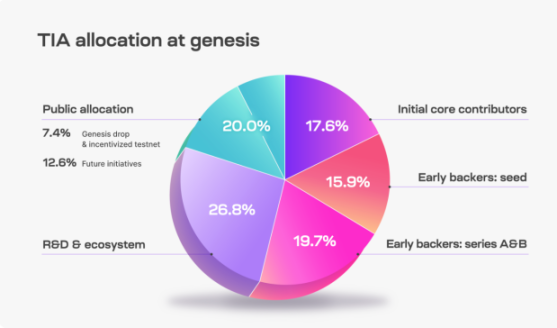
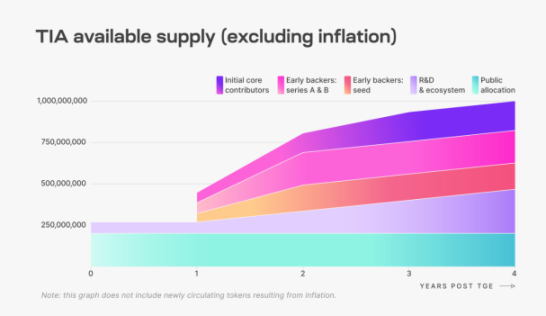
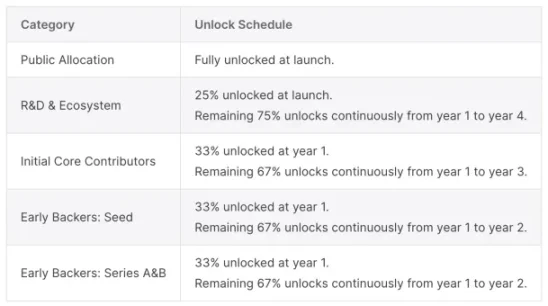
On September 26, 2023, Celestia announced the launch of the Genesis Drop, where eligible participants can claim up to 60 million TIA on October 17, 2023. One-third of the Genesis Drop, or 20 million TIA, is allocated to 7,579 developers and researchers; the remaining two-thirds are distributed to 576,653 on-chain addresses, with 20 million awarded to the most active users of Ethereum Rollups and 20 million allocated to stakers and relayers of Cosmos Hub and Osmosis.
On October 31, 2023, Celestia completed the deployment of its mainnet test version and distributed airdrops, marking the launch of its modular network. The initial circulation of tokens includes 25% for research and ecosystem parts and 100% for public distribution, totaling 26.7% (=26.8%*25%+20%). However, since 12.6% of the public distribution is for future initiatives, excluding this portion results in a circulation ratio of 14.1% (=26.7%-12.6%), corresponding to a circulating quantity of 141 million tokens. Adding the inflation portion aligns with the current circulating volume of TIA shown on CoinGecko at 145 million tokens.
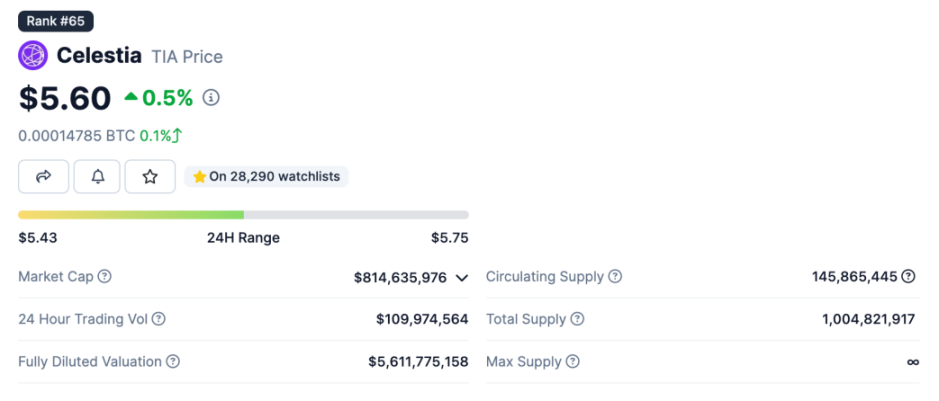
Although the unlocking of TIA for investors and other parts will not occur until one year later, there is selling pressure from the inflation portion. The 8% annual inflation rate is based on a total token supply of 1 billion, meaning that within one year, the newly added tokens from inflation will amount to 80 million, accounting for 56.7% of the initial circulation of 141 million tokens. If this portion of tokens is roughly averaged out daily, it could potentially create a selling pressure of approximately $1.227 million per day (based on a price of $5.6), which is a part that can be easily overlooked.
4. Spot Data
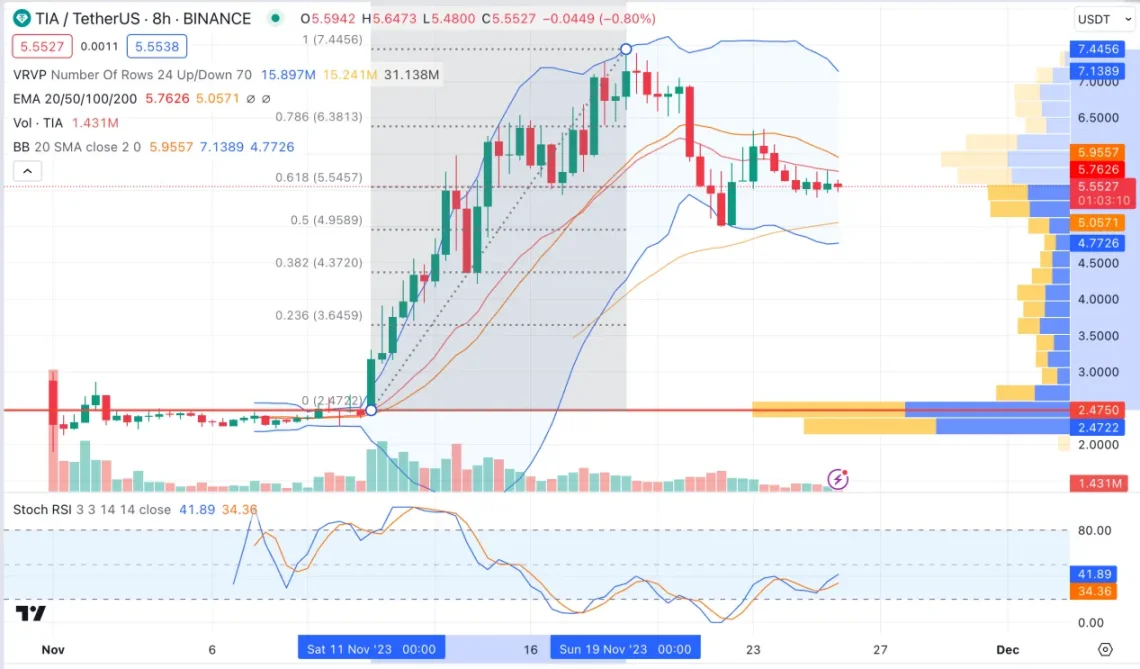
TIA was listed on multiple exchanges such as Binance and OK upon opening. Within the first 10 days after listing, it fluctuated slightly around the $2.5 mark. After a strong surge on November 11, it began an upward trend, peaking at $7.4. The concentrated price for chips is at $2.47, followed by around $5.9. Recent trading volume has decreased, returning to the level of the initial consolidation phase after listing. The current price is at the Fibonacci retracement level of 0.618. On Binance, large accounts net sold 187,000 tokens, while retail investors net bought 100,000 tokens.

5. Contract Data
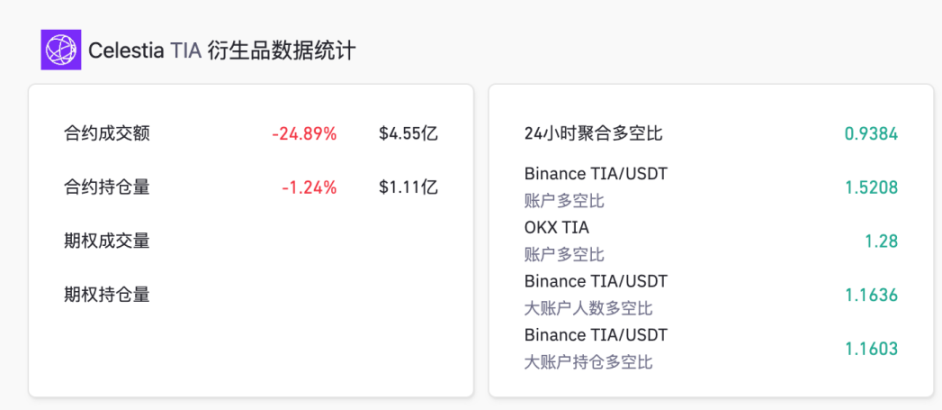
OI/MC=13.6%
Since the price began to decline from its peak, both CVD and open interest have decreased, while the long-short ratio and the number of large accounts have risen, both exceeding 1. Active buy and sell volumes and counts have shown slight divergence.
